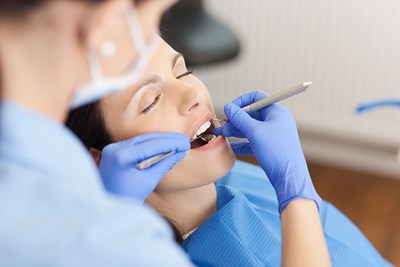Periodontal disease is an infection of the gums. Gingivitis, the less severe form, may only result in gums that become swollen or red. Bleeding may occur while flossing or brushing your teeth. However, periodontitis is a much more advanced stage of the disease where periodontal pockets may form, gum pain is constant, and teeth may even fall out.
Understanding the causes of the disease can help you prevent it from forming in your own mouth. Here is a look at what causes periodontal disease.
Plaque and Tartar Formation
The starting point of periodontal disease is plaque. The combination of bacteria, mucus, and other particles in the mouth create a layer of plaque across the teeth. Through brushing and flossing, the layer of plaque is largely removed, but it forms again in about a day.
When this tartar is left for too long, whether through poor oral hygiene or inefficient brushing, it turns into a layer of calculus called plaque. Plaque forms farther down the teeth, under the gums where it becomes basically impossible to remove through self care measures. Additionally, it creates a nice little spot for more bacteria to gather. It also makes getting rid of plaque-forming tartar even more difficult to clean through daily oral hygiene measures, thus creating a vicious circle of unhealthy gums.
A Vicious Circle
Again, in the beginning you may only have the redness and inflammation of gingivitis to contend with. But the longer tartar sticks around under the gums, the more likely you are to develop the more serious and difficult-to-reverse issues—like pus, receding gums, and loose teeth.
Exactly why do these issues occur? The bacteria that gathers in the plaque layer produces a natural toxin. This toxin induces an inflammatory response in which the bone and tissue in the mouth start destroying themselves. So, as lesser symptoms set in, the stage is set for more serious issues. Unhealthy gums lead to periodontal pockets and pain; the pockets are prime sites for bacteria to collect, which increases gum issues and starts damaging the bone underneath. As bone is damaged, it makes it more difficult to for teeth to stay healthy.
Risk Factors
Equally important to understand are the factors that can induce the cause of periodontal disease. For example, underlying systemic and immune disorders (like heart disease, HIV, or diabetes) can make it more difficult for the body to fight off infections, which increases the risk of developing gum diseases. If you know you have a disorder that makes it more difficult to keep oral health under control, talk to your periodontist or dentist about more effective preventative measures for your situation.
Extreme changes in hormones and certain medications can also increase the risk of developing periodontal disease. A familial history of gum disease can also increase your chances of developing such problems yourself, as can an abnormal bite, ill-formed oral restoration, and simple aging.
External factors largely include bad habits, like using tobacco products, substance abuse, poor oral hygiene, or a poor diet.



